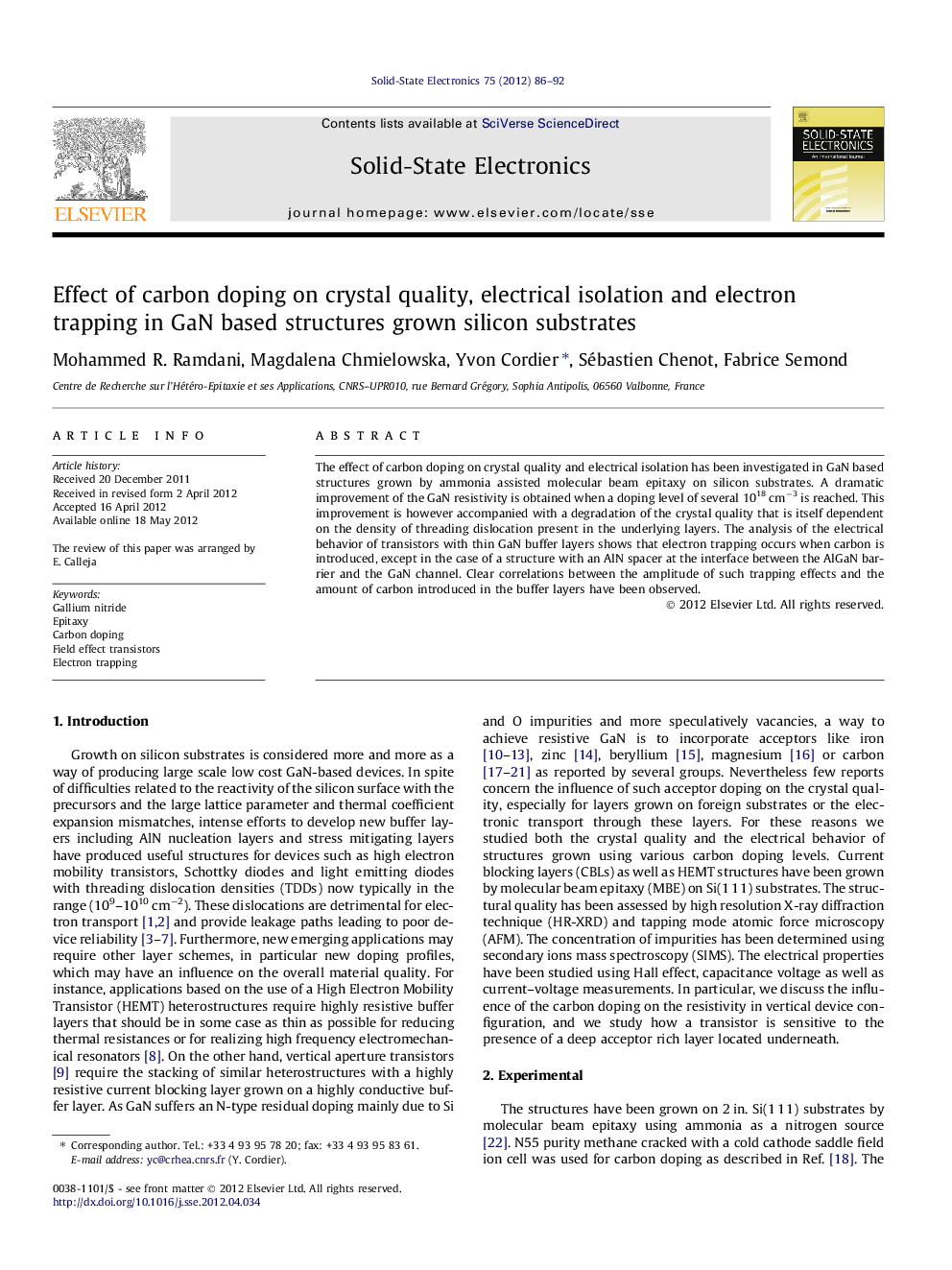| Article ID | Journal | Published Year | Pages | File Type |
|---|---|---|---|---|
| 752893 | Solid-State Electronics | 2012 | 7 Pages |
The effect of carbon doping on crystal quality and electrical isolation has been investigated in GaN based structures grown by ammonia assisted molecular beam epitaxy on silicon substrates. A dramatic improvement of the GaN resistivity is obtained when a doping level of several 1018 cm−3 is reached. This improvement is however accompanied with a degradation of the crystal quality that is itself dependent on the density of threading dislocation present in the underlying layers. The analysis of the electrical behavior of transistors with thin GaN buffer layers shows that electron trapping occurs when carbon is introduced, except in the case of a structure with an AlN spacer at the interface between the AlGaN barrier and the GaN channel. Clear correlations between the amplitude of such trapping effects and the amount of carbon introduced in the buffer layers have been observed.
► The dramatic improvement of GaN layer resistivity by carbon doping has been observed. ► This resistivity improvement is accompanied with a degradation of the crystal quality. ► The degradation is noticeable for structures grown on silicon with thin buffer layers. ► Trapping effects are observed for HEMTs grown with thin carbon doped buffer layers. ► A better confinement of the electron gas seems to limit the trapping effect.
